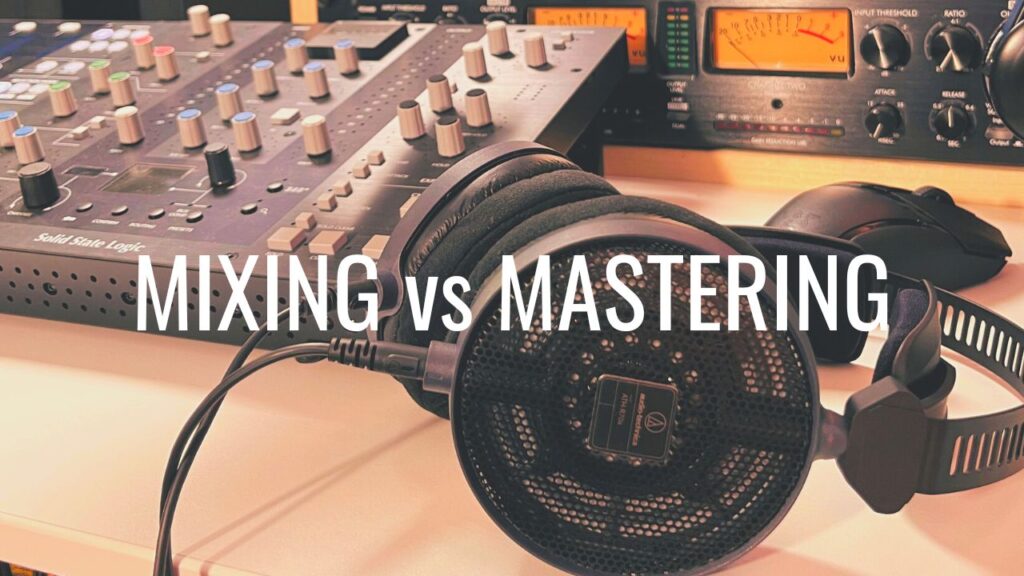
Music production is a multifaceted journey filled with technical and creative processes. Two critical stages in this voyage are mixing and mastering. While these terms may sound interchangeable, they serve distinct roles in sculpting a song’s sonic landscape. In this article, we will unravel the mysteries behind mixing and mastering, exploring their unique functions and how they contribute to the final, polished musical product.
Mixing: The Art of Balance
Mixing is the first step in transforming a raw recording into a cohesive musical piece. It is the process of combining and shaping individual audio tracks to create a harmonious blend. The mixing engineer, often the producer or a dedicated specialist, is responsible for making all the individual elements of a song work together. Here’s what happens during the mixing phase:
Balance: The mixing engineer adjusts the volume levels of each track, ensuring that no one element overpowers the others. This involves finding the right space for each instrument or vocal to sit within the mix.
Panning: The engineer places sounds in the stereo field by panning them left or right. This adds depth and width to the mix, making it more engaging.
Equalization (EQ): EQ is used to fine-tune the frequency balance of each track, helping to eliminate muddiness or harshness and making room for other instruments.
Compression: Compression controls the dynamic range of a track, reducing loud peaks and boosting quieter parts. This creates a more consistent and polished sound.
Effects: Effects like reverb, delay, and modulation are added to create spatial depth and character.
Automation: Automated changes in volume, panning, and effects are used to add movement and dynamics to the mix.
Mixing is an intricate process that requires a keen ear and an understanding of how each element contributes to the overall sound. It’s like painting a canvas, where every color (sound) must work in harmony to create the final masterpiece.
Mastering: The Final Polish
Once the mix is complete, the next step is mastering. This stage is all about refining the entire mix and preparing it for distribution, whether on physical media or digital platforms. Here’s what goes into the mastering process:
Overall Equalization: The mastering engineer applies a final EQ pass to the entire mix to balance the overall frequency response. This ensures the track sounds great on a wide range of playback systems.
Compression and Limiting: The dynamics of the mix are further controlled, ensuring it’s loud enough without sacrificing clarity or causing distortion. Limiting prevents the audio from peaking above a set level.
Sequencing: For an album or an extended play (EP), the mastering engineer arranges the tracks in the desired order, ensuring a smooth transition between songs.
Quality Control: Mastering engineers carefully listen to the track, checking for any issues or artifacts introduced during the mixing stage.
Format Conversion: The mastered audio is then prepared for the desired distribution format, whether it’s for streaming, vinyl, CD, or any other medium.
Metadata and Encoding: Additional information such as track titles, artist name, and ISRC codes is added, and the audio is encoded into the appropriate digital file format.
Mixing vs. Mastering: What’s the Difference?
The key difference between mixing and mastering lies in their focus and purpose. Mixing deals with individual tracks, sculpting the sound and ensuring that each element harmoniously fits within the mix. On the other hand, mastering deals with the entire mix as a single entity, refining it, and preparing it for distribution. Mixing is an art, while mastering is the final quality check and technical preparation for a wide range of listening environments.
Conclusion
In the world of music production, mixing and mastering are two critical steps that, when executed with skill and precision, can transform a rough recording into a professional and engaging musical experience. Mixing shapes the individual components into a cohesive whole, while mastering puts the finishing touches on the entire project. Together, these processes are the bridge that connects the artist’s vision to the listener’s ears, making music an art form that captivates and moves us all.
Master Your Tracks Instantly With AI on Waves waves.alzt.net/online-mastering
From Mixing to AI Mastering To Release, Landr Studio has you Covered save $50
By Clicking here www.audiotechtv.com/landr-50-off/
DISCLAIMER: Some of the links on this site are affiliate links. If you use the product links, I may receive a small commission. Thank you.
